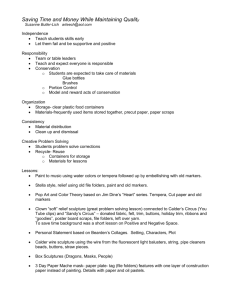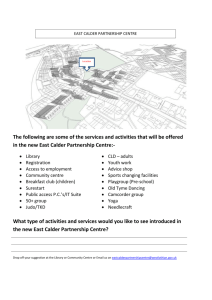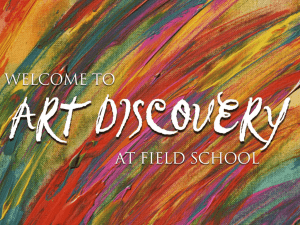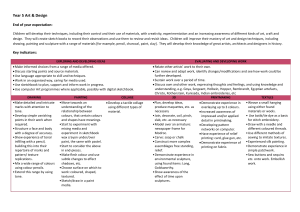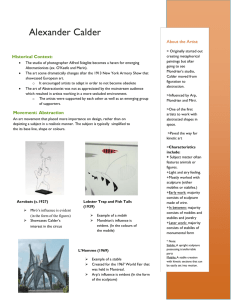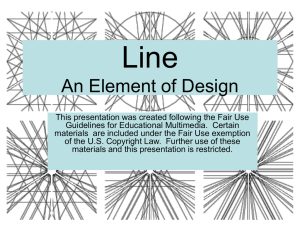Family Art Activities Op Mobile Number 10 Warwick Arts Centre foyer
advertisement
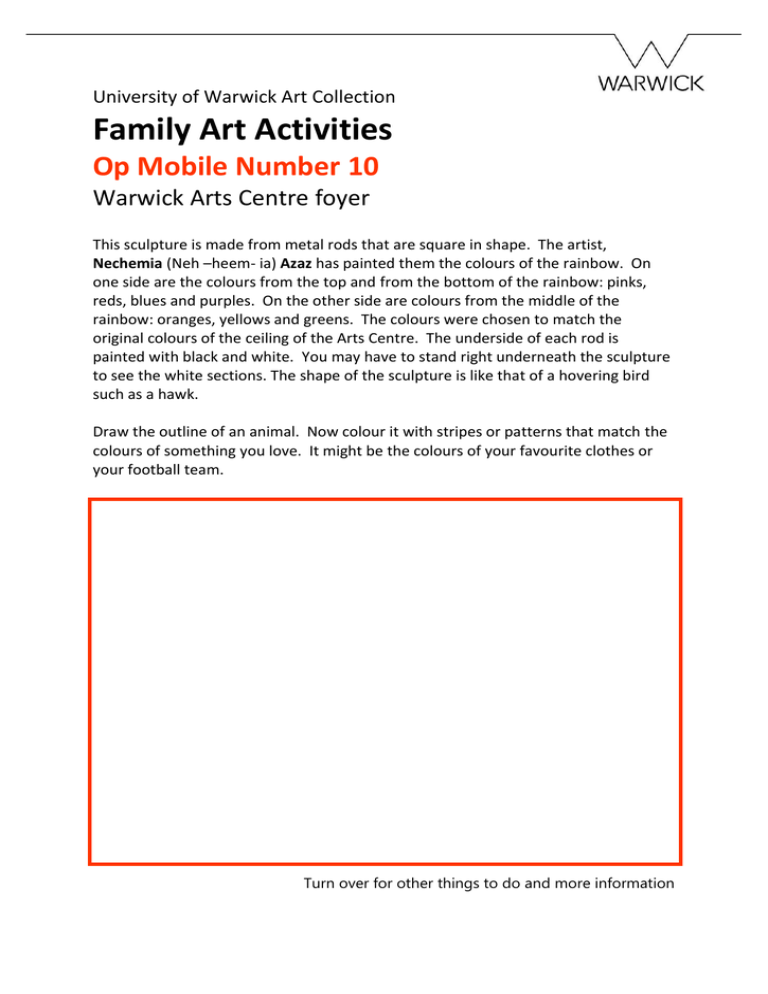
University of Warwick Art Collection Family Art Activities Op Mobile Number 10 Warwick Arts Centre foyer This sculpture is made from metal rods that are square in shape. The artist, Nechemia (Neh –heem- ia) Azaz has painted them the colours of the rainbow. On one side are the colours from the top and from the bottom of the rainbow: pinks, reds, blues and purples. On the other side are colours from the middle of the rainbow: oranges, yellows and greens. The colours were chosen to match the original colours of the ceiling of the Arts Centre. The underside of each rod is painted with black and white. You may have to stand right underneath the sculpture to see the white sections. The shape of the sculpture is like that of a hovering bird such as a hawk. Draw the outline of an animal. Now colour it with stripes or patterns that match the colours of something you love. It might be the colours of your favourite clothes or your football team. Turn over for other things to do and more information More information In 1931, the French artist Marcel Duchamp (Mar-sell Dew-shom) was the first person to use the word "mobile" for an artwork. He used it to describe a sculpture by the American artist Alexander Calder. A mobile is a moving sculpture made up of different parts that are balanced together and do not touch. Alexander Calder started by making toys for children. In 1926 he made his "Cirque Calder" (French for "Calder Circus"), a tiny toy circus made from wire, string, fabric and other objects that he found. The circus fitted into a suitcase so Alexander Calder could give performances wherever he went. He went on to make big mobiles in the 1950s that were rounded shapes in black and red, balanced at the end of wires. More things to do Make a mobile using an old wire coathanger or paper clips and straws Make a tiny circus that will fit into an old cereal box First, ask your family what materials you can use. You will need to make a ring where the clowns and animals can perform. You may have Lego or farm animals that you want to use or you may want to make fantastic creatures like unicorns from play dough or draw them on paper and cut them out. Perhaps you can make jumps or see-saws. Don't forget to make tickets and posters for your performance. Will you have music? To find out more about the University of Warwick Art Collection visit www.warwick.ac.uk/go/art
